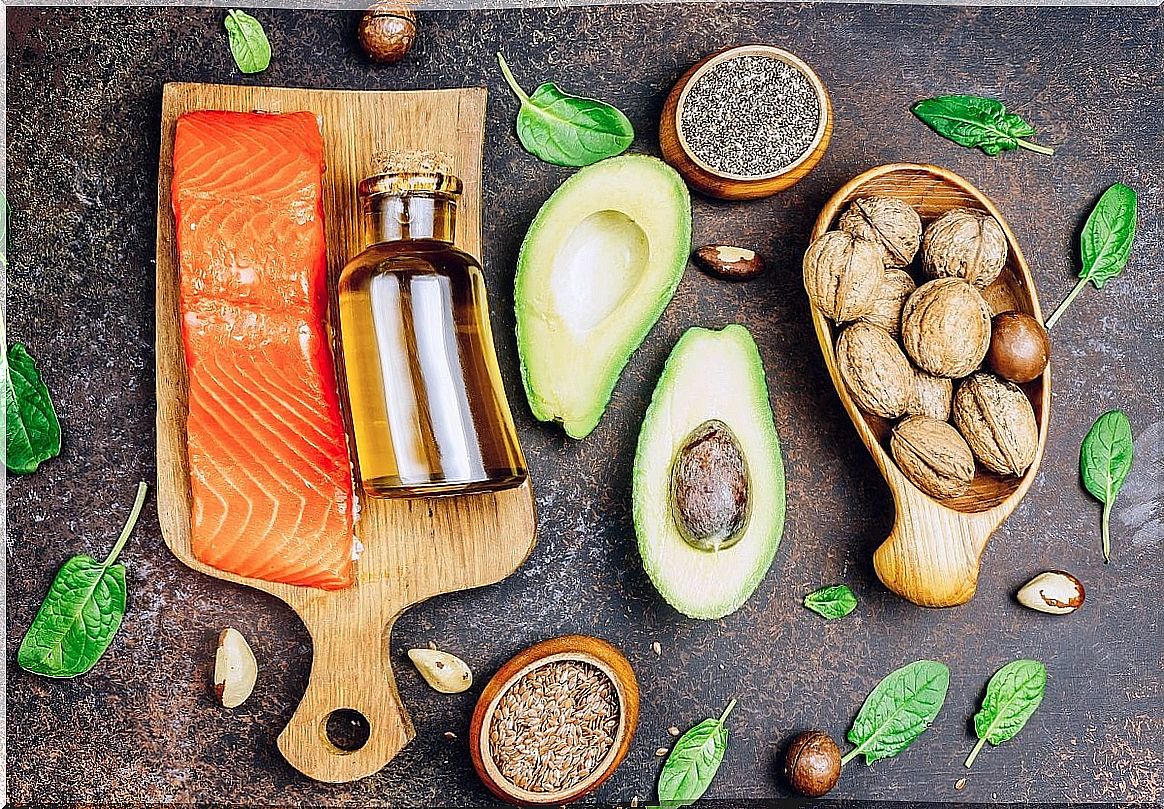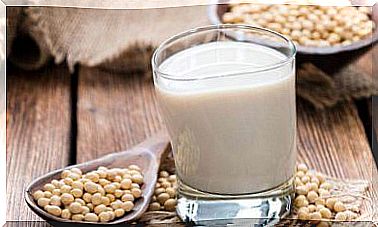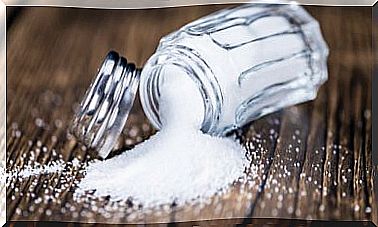Polyunsaturated Fats: Main Sources And Functions In The Body
Between hits and misses, fat is generally labeled a nurturing nutrient, even though polyunsaturated fats are associated with nutrition and health. Like other varieties, 1 single gram provides 9 kilocalories, they are a vehicle for fat-soluble vitamins and they fulfill many functions in the body.
In the sea or in the crops of seeds and nuts, we find the foods that provide the most polyunsaturated fat. In addition, they must be in balance with other types of fat to fulfill their nutritional and healthy functions. Do you want to know more about it? Keep reading!
What are polyunsaturated fats?
From a chemical point of view, polyunsaturated fats are fatty acids that have more than one double bond between their carbon atoms, which makes them very unstable and active to react with other atoms, such as oxygen, for example.
Omega-3 and omega-6 fatty acids represent the most abundant structural polyunsaturated fat in mammals. They receive this name, since the last terminal group of the fatty acid is called omega. From here, the position of the first double bond, which appears at carbon 3 or 6, begins to be counted.
Coronado describes that, from omega-3 -alphalinolenic (ALA) – and omega-6 -linoleic acid (LA) -, other important ones for health are formed. These precursor fatty acids are known as “essential (EFA)” because they are necessary for the body to function and the only way to acquire them is through food.

Omega-3 fatty acids
Among the 6 types of omega 3 fatty acids, the most important are docosahexaenoic acid, also known as DHA and eicosapentaenoic or EPA, which are formed from ALA.
Some specialists report that EPA regulates brain function, sight and the production of prostaglandins. In addition, it is easily converted to DHA, a fatty acid that is part of cell membranes and the visual development of the fetus and early childhood.
There are some contradictions about the adequate amount of omega-3 to consume. Pharmacists and biologists recommend that the best consumption ratio between EPA and DHA is 4: 1. However, other studies postulate that it must be the opposite.
Omega 6 fatty acids
In this group we find linoleic acid (LA), gammalinolenic acid (GLA) and arachidonic acid (AA). They participate in the synthesis of pro-inflammatory prostaglandins and as structural components of cells. They can also help control blood sugar, reduce the risk of diabetes, and lower blood pressure.
Polyunsaturated Fat Sources
Food contains a mixture of fatty acids, between saturated, monounsaturated and polyunsaturated. In some of them, some predominate more than others. Those that contain the highest proportion of polyunsaturated are shown below.
Foods that provide omega 3
The main sources are fatty fish such as trout, salmon, herring, anchovies, albacore and sturgeon. In the magazine Interciencia, the total values of EPA and DHA are shown, in grams per 100 grams of fish, crustaceans and molluscs.
- Lake trout : 2.0%.
- Dogfish : 2.0%.
- Salmon : 1.8%.
- Herring : 1.7%.
- Tuna : 1.5%.
- Anchovies : 1.4%.
- Sturgeon: 1.5%.
- Smooth : 1.1%.
- Rainbow trout : 0.6%.
- Carp : 0.6%.
- Shrimp : between 0.3-0.5%.
- Conch shell : 1.0%.
- Oyster : 0.6%.
- Short-finned squid : 0.6%.
In the same publication appear the values of the alpha linolenic precursor or ALA, in vegetables, seeds, nuts and oils.
- Purslane : 4.5 milligrams / gram.
- Quinoa : 8.35%.
- Cooked soybeans : 2.1%.
- Linen : 22.8%.
- Chia : 3.9%.
- Walnut : 6.8%.
- Flaxseed oil : 53%.
- Canola oil : 12%.
- Rapeseed oil : 11%.
- Soybean oil : 7.3%.
Foods that provide omega 6
The main source of omega-6s are seed oils, such as sunflower, soy, and safflower, among others. The USDA food table shows the oils with the highest proportion per 100 grams of vegetable oil.
- Safflower oil : 74.6%.
- Grapeseed oil : 69.9%.
- Linseed oil : 67.9%.
- Sunflower oil : 65.7%.
- Poppy oil : 62.4%.
- Soybean oil : 58.9%.
Some emulsions such as mayonnaise, non-hydrogenated margarines, and dressings that are made with these oils are also high in omega-6s.
Health benefits of polyunsaturated fats
The World Health Organization (WHO) recommends the consumption of polyunsaturated fats to avoid risks of chronic diseases in the adult population. Many of these benefits are related to EPA and DHA.
Anti-inflammatory activity
Doctors Pinazo and Gomar explain that an increase in the consumption of omega-3 fatty acids increases the production of anti-inflammatory prostaglandins. Various studies reveal the effect of omega-3s on inflammatory bowel disease, rheumatoid arthritis and on asthma.
Some authors promote the frequent consumption of fatty fish as adjuvants in the treatment of these diseases. However, more research is required to deepen these findings.
Action on the skin and anti-aging
Breiden and Sandhoff state that the skin needs essential fatty acids in situations of stress, dryness, sunburn, among others. Omega-3s restore membrane balance and produce an increase in anti-inflammatory prostaglandins.
A recent review reports the beneficial effect of these fats to stop the chronological aging process and photoaging attributable to the UV rays of the sun and oxidative stress.
Child development
In research published in the Lancet magazine, it was observed that the children of mothers who consumed between 227 and 340 grams of fatty fish per week were healthier. The children had fewer problems with communication, behavior, and motor skills.
Fish oil supplements don’t seem to work like fatty fish. In pregnant women consuming omega-3s, there was no benefit in preventing allergies or premature birth. There was also no effect on the visual or mental development of the children.
Reduces cognitive decline during aging
The journal Nutrition Hospital concludes that omega-3 fatty acids protect against mild cognitive impairment, dementia and the risk of Alzheimer’s disease in older adults.
For its part, the journal Neurology points out that low blood levels of DHA are associated with a smaller brain volume and cognitive impairment. A review in PloS One recognizes DHA as important for improving memory in older adults.
Van Gelder and other experts also found that a moderate intake of EPA + DHA can stop cognitive decline in older adults. Despite this, other studies have found no benefit of omega-3 supplementation on Alzheimer’s disease.
Cardioprotectors
The first reports on the heart-healthy properties of marine omega-3s come from the 1960s, when they raised their protective role against atherosclerosis and thrombosis.
Among many investigations in this regard, a Japanese study found that the consumption of fatty fish and omega-3 supplements decreased mortality from heart failure.
However, there are still contradictions. The journal JAMA Cardiology published that the use of supplements does not decrease mortality from cardiovascular diseases.
What a study in the journal Circulation did find is that fish oil supplements lower blood lipids . A risk factor that increases cardiovascular disease.
The American Heart Association recommends about 2 servings of fish a week, or between 300 and 500 milligrams of omega-3s a day. For their part, patients with heart disease should consume about 1,000 milligrams a day.

Possible risks and complications of polyunsaturated fats
Like other nutrients, polyunsaturated fats should be consumed in balanced amounts. In this way, its benefits are obtained without putting health at risk. What are your possible risks?
High caloric density
Polyunsaturated fats provide 9 kilocalories for each gram. Therefore, like any other fat, they are considered high in calories to the diet. Thus, caution must be exercised when ingesting foods such as fish or vegetable oils as sources of polyunsaturated fats.
Although they are considered healthy foods, they make a significant contribution of calories that, if not balanced with the other nutrients, will end up stored as body fat.
Pro-inflammatory fat
Omega-6 fatty acids produce a number of pro-inflammatory substances such as prostaglandins E2, in contrast to omega-3s which are anti-inflammatory.
Tortosa and other experts recommend maintaining an adequate intake ratio between both types of fatty acids, since consuming more omega-6 than omega-3 can promote inflammatory diseases.
According to Simopoulos, the intake ratio of omega-3 and omega-6 should be 2: 1, with preference for EPA, DHA and arachidonic acid.
Care in use and storage
Some researchers state that polyunsaturated fats are damaged faster than others due to the instability of their double bonds, which leads them to react with oxygen and form some undesirable compounds.
For this reason, they should be stored in a cool place with little light, before opening the package. Once uncovered, they must be kept refrigerated. Zárate and other experts comment that heat produces harmful substances in these fats, related to neurodegenerative diseases in laboratory animals.
Polyunsaturated fatty acids are part of a healthy diet. Like any nutrient, they should be consumed in moderation and balance, especially omega-3 and omega-6. If you have doubts about the amounts of consumption that correspond to you, consult a health or nutrition specialist.









